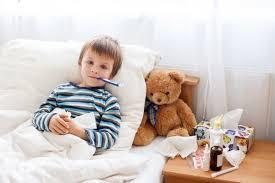Caregiver Tips: Monitoring Sleep Fevers Without Disturbance

Sleep is critical for recovery, especially when a child or loved one is running a fever. However, traditional fever checks often involve waking the sleeper, using disruptive tools like oral or ear thermometers. Fortunately, new approaches now allow caregivers to monitor nighttime fevers more gently. If you're a parent, eldercare provider, or healthcare worker, these non-invasive fever-monitoring strategies can help you ensure safety—without disturbing much-needed rest.
Why Monitoring Nighttime Fevers Matters
Fevers tend to spike at night, driven by the body’s natural circadian rhythm. For children and elderly individuals, especially those battling illness, this temperature fluctuation can be more intense and dangerous if unnoticed. High fevers may result in:
-
Dehydration
-
Febrile seizures (in children)
-
Disrupted sleep recovery
-
Potential worsening of underlying conditions
Nighttime fever monitoring ensures you're ready to act if temperatures reach critical levels—without sacrificing the patient’s comfort.
Traditional Methods vs. Non-Invasive Monitoring
While methods like rectal, oral, or infrared thermometers are accurate, they can disturb sleep, provoke anxiety in children, or require waking someone up entirely. This can interrupt crucial rest, which is essential for healing.
Today’s non-invasive tools, like forehead temperature dots, skin stickers, and wearable monitors, are changing how caregivers track fevers at night.
5 Caregiver Tips for Monitoring Sleep Fevers Without Waking the Patient
1. Use Thermochromic Stickers or Fever Dots
Thermochromic stickers, like FeverDots, are applied gently to the skin (commonly on the forehead). These dots change color as body temperature rises, providing an immediate visual indicator of fever. You can check from a short distance—no batteries, screens, or digital readings needed.
They’re particularly helpful for:
-
Sleeping toddlers who dislike thermometers
-
Elderly patients prone to disorientation when woken
-
Tracking fevers over time without causing stress
2. Create a Calm Monitoring Routine
Plan brief nighttime check-ins using a soft flashlight or bedside lamp. Avoid harsh lighting or cold tools. Check for skin warmth, sweating, or facial flushing in addition to using non-invasive tools.
Consistency helps you notice patterns. If the fever persists or escalates during specific hours, take note for your healthcare provider.
3. Dress Appropriately and Control the Room Temperature
Avoid over-bundling. Light cotton pajamas and breathable bedding help the body regulate heat. Keep the room cool (between 68°F–72°F / 20°C–22°C), which aids fever management.
Monitor the ambient temperature alongside body heat for a more complete picture.
4. Hydration Station by the Bed
Place a water bottle or sippy cup within reach, especially for older children or seniors who may wake up thirsty. Dehydration worsens fever symptoms and can interfere with natural cooling mechanisms.
Avoid sugary or caffeinated drinks—opt for plain water or electrolyte solutions.
5. Understand the Fever Type You’re Dealing With
Not all fevers behave the same. Some are intermittent, others remittent or continuous. As a caregiver, understanding the 12 Types of Fever helps you respond appropriately and know when professional help is needed.
This knowledge allows you to distinguish between:
-
Self-limiting fevers (often viral)
-
Fevers requiring urgent intervention (e.g., high-grade or relapsing)
When to Wake the Sleeper
In general, avoid waking someone up unless:
-
The fever exceeds 102.5°F (39.2°C)
-
You observe signs of respiratory distress, seizures, or delirium
-
They are unresponsive, excessively sweating, or shivering uncontrollably
-
Medical advice recommends scheduled medication or monitoring
Use discretion and trust your caregiver instincts. In questionable situations, it’s always better to err on the side of caution and consult a healthcare provider.
Final Thoughts: Restful Monitoring Is Possible
Caring for a loved one through the night doesn’t have to come at the expense of their sleep. With gentle, non-invasive tools like thermochromic stickers and thoughtful monitoring habits, you can ensure safety while preserving peace and comfort.
Understanding the nature of the fever, preparing the environment, and relying on innovative tools will make nighttime care easier and more effective. To learn more about fever types and what they mean, visit the full guide on the 12 Types of Fever.







